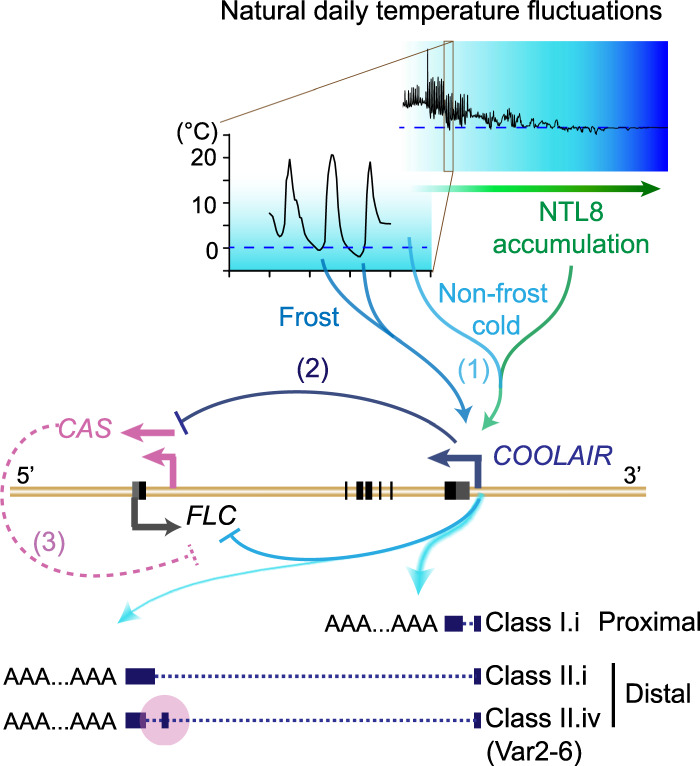Figure 5.

A schematic illustration of COOLAIR regulation of FLC expression. (1) Natural low temperatures (indicated by graded blue) promote NTL8 slow accumulation (graded green arrow), providing the long-term cold information for COOLAIR up-regulation and FLC regulation. Frosts function as strong cues to enhance COOLAIR up-regulation, conferring transcriptional plasticity to FLC. Furthermore, proximal polyadenylation of COOLAIR is enhanced by natural low temperatures, including freezing, supporting the mechanism tightly linking the altered 3′ processing/polyadenylation of COOLAIR to the transcriptional state at the FLC locus (Liu et al. 2010; Marquardt et al. 2014; Fang et al. 2020). (2) CAS transcription is inhibited by transcription from the upstream COOLAIR promoter, possibly influenced by the cold-promoted proximal polyadenylation of COOLAIR. (3) CAS originates from the region (shaded in pink) where the class II.iv exon is alternatively spliced (Li et al. 2015), highlighting its importance in the COOLAIR regulation of FLC transcription.
